Another day, another magnetic gaming keyboard. But Arbiter Studio's latest release — the KITSUNE Polar 75 Pro — is not just any magnetic gaming keyboard. It's an amazing magnetic gaming keyboard that sounds fantastic, feels great, and has features like "Snap Tap" (SOCD), which is, some have argued, so good in certain games that it's basically cheating.
The Polar 75 Pro is a wired mechanical gaming keyboard with magnetic Hall Effect switches (Arbiter-exclusive Fuji Pro), a new PCB design that separates the LEDs from the Hall sensors to deliver a "2x boost in performance by lowering input latency and increasing Rapid Trigger accuracy," and high-quality dye-sub PBT keycaps in Arbiter's own AOP profile. It's a great-sounding, great-feeling keyboard for both gaming and typing, and it's surprisingly budget-friendly: $165 alone or $175 bundled with a memory foam wristrest.
Design and Construction of the Polar 75 Pro
Although the KITSUNE Polar 75 Pro doesn't immediately look like it deviates too much from the brand's Polar 65, we reviewed earlier this year, the keyboard actually has quite a few design tweaks — it's not just a 75-percent version of the Polar 65. The Polar 75 Pro comes in one color: black, with white keycaps (and black accent keys). Like the Polar 65, the Polar 75 Pro sports a CNC aluminum frame with a black matte anodized finish over a semi-translucent plastic case.
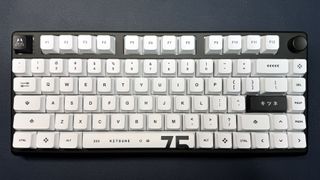
The Polar 75 Pro comes with dye-sub PBT keycaps in the brand's new AOP (Arbiter Original Profile) profile, which is lower overall, and has more aggressively-sculpted rows, than the KOP profile keycaps seen on the Polar 65. The AOP keycaps also have a wider surface area and 1.5mm-thick walls for an even more premium feel. The keycaps are white with black printed legends, and the keyboard comes with two black accent keys (Enter and Esc) installed. The box includes three extra keycaps: white Enter and Escape keys for those who don't like the accent key aesthetic, and an alternate Spacebar with a more understated geometric design (vs. the default Spacebar's oversized '75').

The Polar 75 Pro, as its name suggests, features a 75-percent layout — which is like a slightly more compact TKL. The keyboard has all alphanumeric keys, a full function row (separated into four-key groups for convenience), a row of four navigation keys (Home, Delete, PgUp, and PgDn), and a rotary knob. The knob is small, notched, clickable, and has the same black matte anodized finish as the rest of the top case. It's a standard volume/mute knob, and is not programmable.
It's pretty compact even for a 75-percent layout, measuring 12.4 inches (315mm) wide by 5.24 inches (133.15mm) deep. The back of the keyboard, including keycaps, is 1.6 inches (40.85mm) thick, while the front is 1.16 inches (29.38mm); the keyboard sits at a fairly standard five-degree angle and does not come with any way to adjust that angle.

The front of the Polar 75 Pro is lower than that of the Polar 65 (1.22 inches / 31mm), but most users could still probably benefit from a wristrest. For an extra $10 ($175), Arbiter Studio will bundle a cloth-covered cooling gel-infused memory foam wristrest with the keyboard; you can also purchase the wristrest separately for $15.

The bottom of the Polar 75 Pro is made of semi-translucent plastic and has two rubber strips that run the full length of the keyboard to help keep it stable when you're aggressively gaming (or typing). These probably aren't all that necessary, however, as the keyboard is pretty sturdily-built with its aluminum frame — it weighs 2.72 pounds (1,236g), which is decently hefty (though not nearly as heavy as something like the 4.28lb Meletrix Boog75).
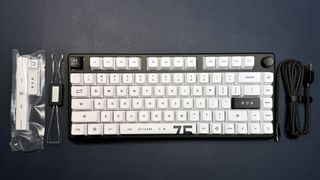
The Polar 75 Pro comes with a handful of accessories: a 5.9-foot (1.8m) detachable, braided USB-C to USB-A cable, a dual keycap/switch puller, and three alternate keycaps. The keyboard has one USB-C port for connectivity, located along the top on the left side.
Specs
Swipe to scroll horizontally
| Size | 75% |
| Number of keys | 81 |
| Switches | Fuji Pro Magnetic switches |
| Backlighting | Yes |
| Onboard Storage | Yes |
| Dedicated Media Keys | Volume knob |
| Game Mode | Yes |
| Additional Ports | 0 |
| Connectivity | Wired (USB-C) |
| Cable | 5.9ft. / 1.8m USB-C to USB-A, detachable, braided |
| Keycaps | Dye-sub PBT |
| Construction | CNC Aluminum frame Plastic bottom case |
| Software | Arbiter Web App |
| Dimensions (LxWxH) | 12.4 x 5.24 x 1.6 inches / 315 x 133.15 x 40.85 mm |
| Weight | 2.72lbs / 1,236g |
| MSRP / Price at Time of Review | $165.00 / $165.00 |
| Release Date | Aug. 2, 2024 |
Typing and Gaming Experience on the Polar 75 Pro
The Polar 75 Pro is different from the Polar 65 on the inside as well as the outside. It sports a new PCB design, which has its hall sensors separated from the LEDs. According to the company, this lowers input latency and increases rapid trigger accuracy. It also comes with new switches — "next-gen" Fuji Pro magnetic switches.
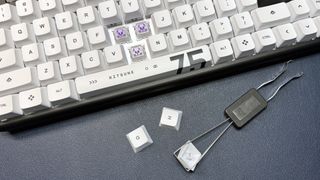
The Fuji Pro magnetic switches have similar specs to the Fuji switches we saw on the Polar 65: linear, with an initial force of 36g and an end force of 60g, an actuation range of 0.1 - 3.8mm, and 4mm of total travel. The Fuji Pro switches have a walled stem design to help eliminate stem wobble and have redesigned housing that offers "superior light guide and diffusion" for "stunning RGB lighting effects." They're also rated for 150 million keypresses instead of 100 million. I assume these are also custom-built for the brand by Gateron, even if the housing now says "Fuji" instead of "Gateron." Of course, the Polar 75 Pro is also hot-swappable, but as the magnetic switch market is a little wild right now, don't expect to find a ton of compatible switches.
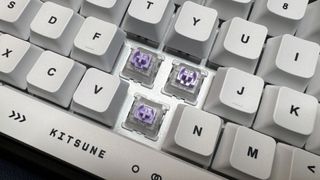
Typing on the Polar 75 Pro is a very, very satisfying experience. The Polar 65 was one of the best-sounding out-of-the-box keyboard we've ever tested, and the Polar 75 Pro manages to sound — and feel — even better.
This is partly thanks to the switches, which are factory-lubed and stable, offering a consistent, linear keypress with no tactile bump or audible click. I'm not normally a big fan of linear switches for typing, but the smoothness of the Fuji Pro switches combined with the satisfying thockiness of the keyboard is fantastic. The switches aren't too different from the first gen, however: stem wobble wasn't a big issue on the Polar 65, and so the improvements aren't all that noticeable.
Inside its case, the Polar 75 Pro has two layers of dampening silicone, which do a great job of absorbing sound and minimizing case ping. The screw-in stabilizers are decent — you can still hear some rattle in the Spacebar and in some of the larger keys, but, like the Polar 65, the Polar 75 Pro is one of the best-sounding prebuilt keyboards I've tested right out of the box. The new keycaps also play a part in the typing experience — the lower profile is much more comfortable, and the wider, slightly more curved tops seem to hit my sweet spot for speed and accuracy.
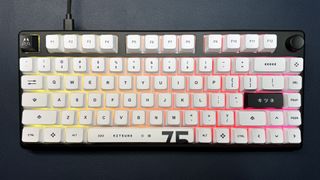
Of course, magnetic switches are all the rage for gamers, not typists. The Polar 75 Pro is also an excellent gaming companion, though most of the magnetic switch features are going to be most useful for eSports and first-person shooters (rather than MOBAs, MMORPGs, and non-shooting single-player games). Like other magnetic switch keyboards, the Polar 75 Pro features adjustable actuation (0.1 - 3.8mm, in 0.1mm increments) which can be set per-key, as well as Rapid Trigger support for when you need to be able to press keys again the instant you stop pressing them.
The keyboard also supports Super Tap (SOCD), which lets the keyboard take the input of the last-pressed key — and only the last-pressed key. In other words, if you press A to go left and then press D to strafe right, you won't need to worry about potentially going nowhere if your keypresses overlap — the keyboard will only take the last-pressed key, so it's great for games like CS:GO (and it borders on what many might consider to be cheating — I'll leave those judgments up to you guys, though). This feature isn't unique to Arbiter Studio, however — Razer's Snap Tap and Wooting's Rappy Snappy features are similar.
Features and Software of the Polar 75 Pro
The Polar 75 Pro is programmable via Arbiter Studio's online Arbiter Web App. The app has improved a lot since we last took a look at it, but that's not really saying much — when we last played around with it in February, you couldn't even remap keys (but now you can). The app has three sections: for adjusting the magnetic switch settings, changing the RGB backlighting, and remapping keys.
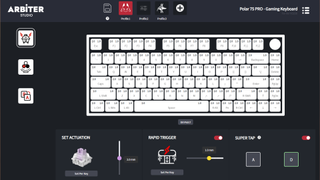
The magnetic switch settings are, for the most part, fairly standard: You can set per-key actuation level (between 0.1 and 3.8mm) and you can turn on and adjust Rapid Trigger, which dynamically adjusts the reset point of a key to match its actuation point. This lets you trigger another keystroke immediately upon releasing a key, instead of having to wait for it to travel past a fixed reset point. You can also turn on Super Tap, which, when enabled, causes the keyboard to only accept the last-pressed key's input.

The Polar 75 Pro's RGB backlighting is nice and bright — bright enough that it's easily visible, even without shine-through keycaps. It's not per-key, however, and you're limited to one of the 10 preset effects in the Arbiter Web App.

You can use the Arbiter Web App to remap keys — all of the primary layer and most of the secondary layer can be remapped. Remapping is still somewhat limited, however — you can only remap keys to perform keyboard, mouse, and a handful of media functions. There's no macro recorder.
The Polar 75 Pro has room for up to three onboard profiles, which you can set up in the Web App and switch between using keyboard shortcuts.
The Bottom Line
Arbiter Studio's first keyboard, the Polar 65, was very impressive — and this second iteration makes almost all of the right improvements: a bigger, more convenient layout (who's using 60- and 65-percent keyboards? Really?!), better switches and keycaps, and an app that works... slightly better. If Arbiter Studio makes a full-size keyboard and adds macro recording to its app (or even on-the-fly macro recording to the hardware?), I'll have found my holy grail. Until then, the Polar 75 Pro is my new favorite. (Don't get me wrong, I also loved the 75-percent Keychron Q1 HE, and I thought the Meletrix Boog75 sounded fantastic out of the box, too. But both of those keyboards are over $200, while the Polar 75 Pro is just $165.)
MORE: Best Gaming Keyboards

 1 month ago
35
1 month ago
35
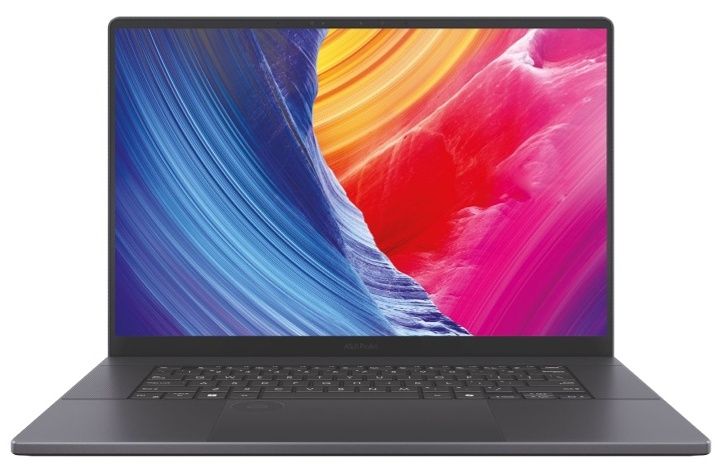
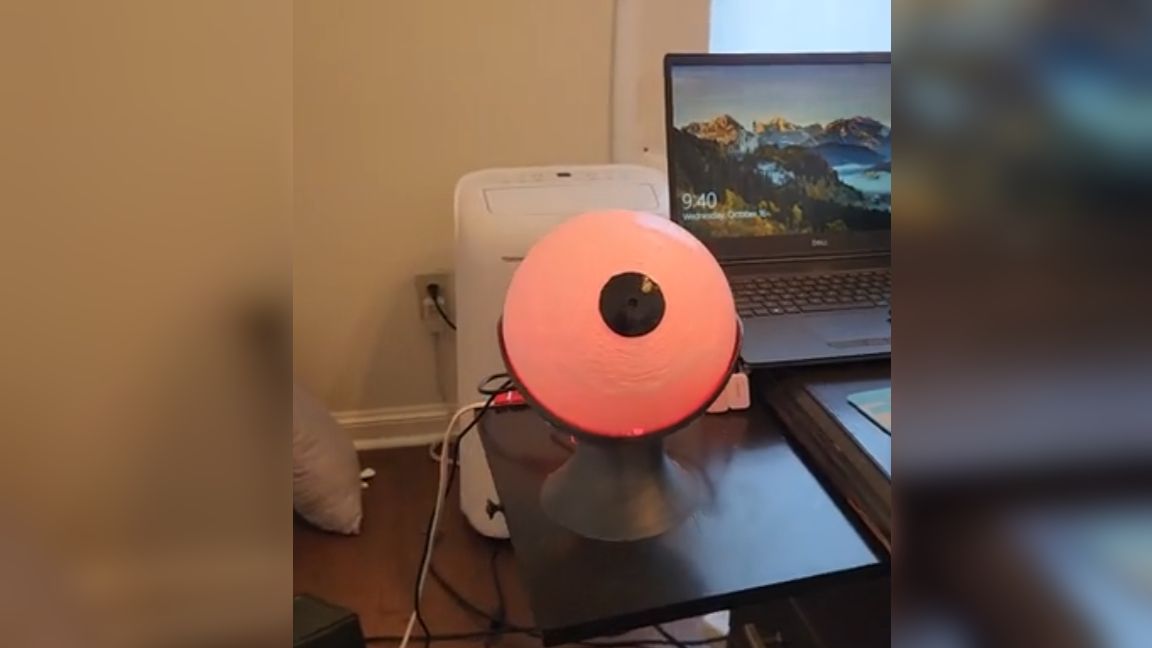
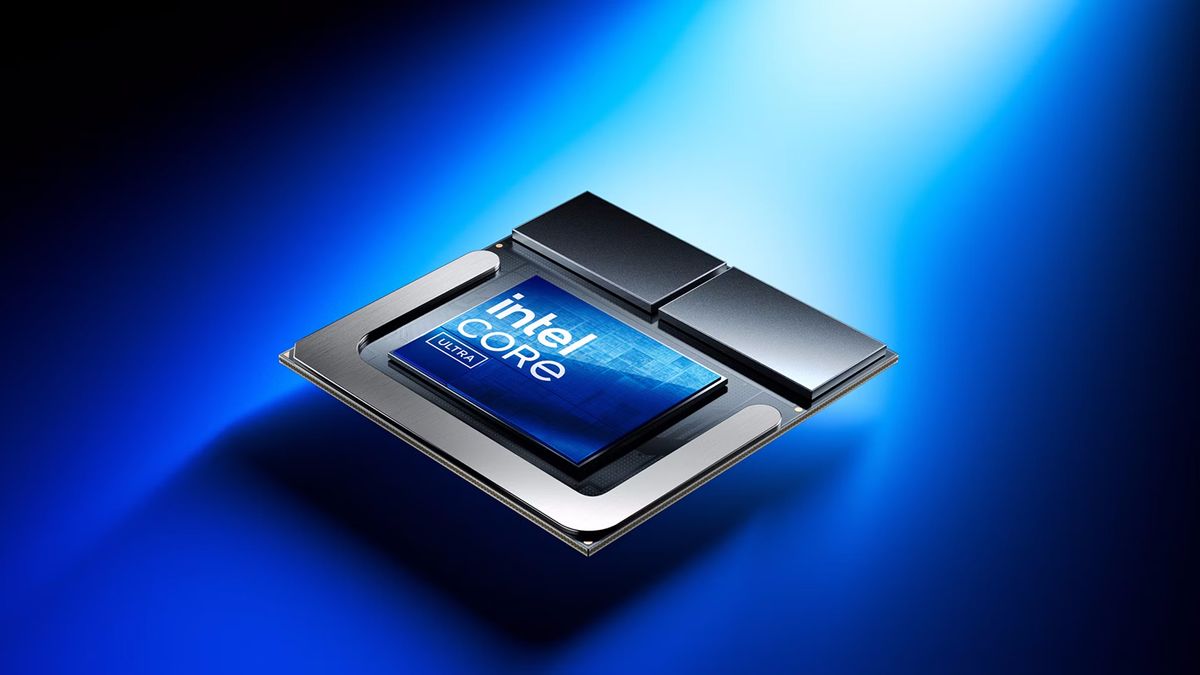


:quality(85):upscale()/2024/10/17/848/n/1922729/9dece426671163b35dcb11.60305022_.jpg)


 English (US) ·
English (US) ·